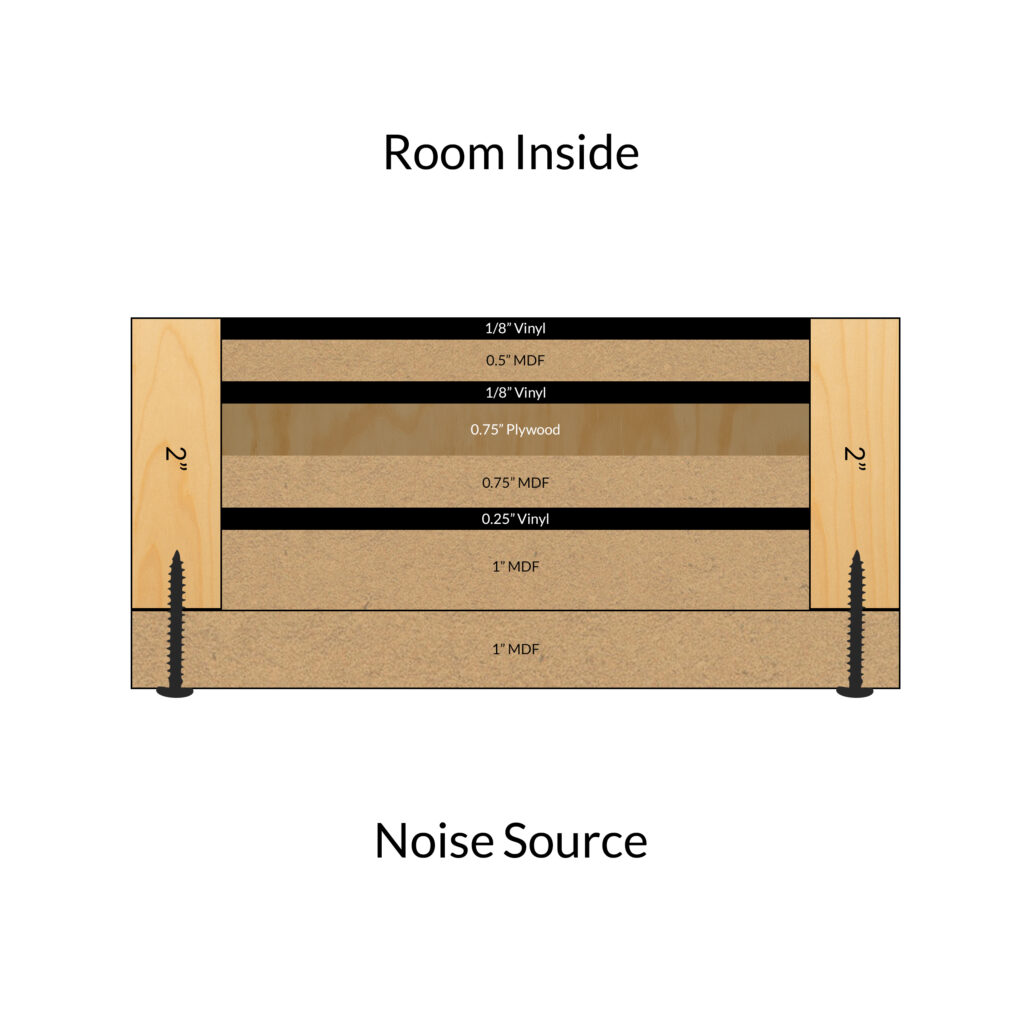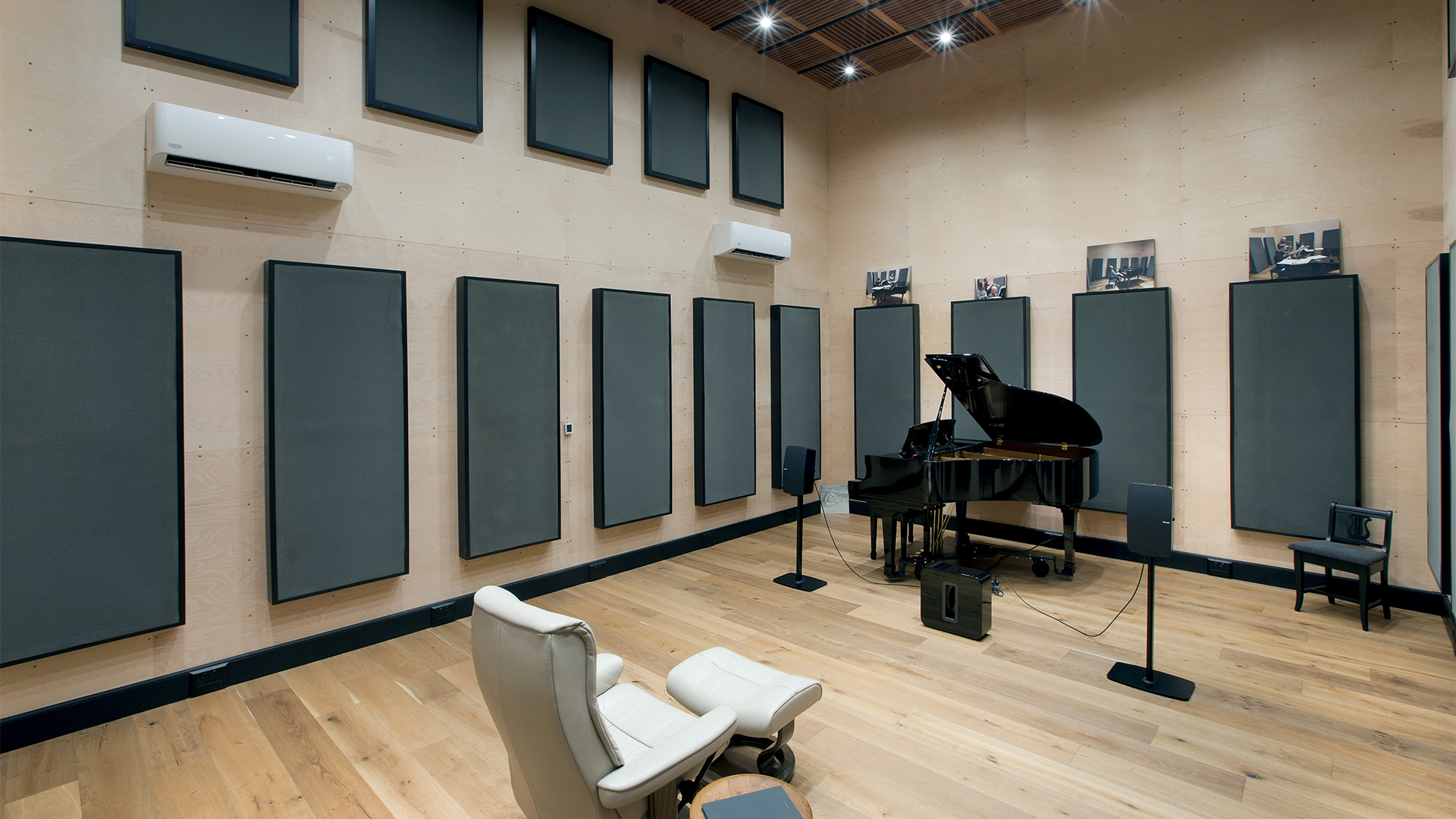
Table of Contents
Introduction
There are no such things as noise reduction panels. There are sound absorption panels but you can not use a panel to “absorb” noise. Noise is vibrational acoustics and no noise reduction panel is going to minimize vibrations enough to attenuate the frequencies and amplitudes of noise. Noise is like water. It will flow around over and under anything, especially a noise reduction panel. In order to reduce the transmission of noise you must build a barrier between the noise source and the receiver.
The noise is measured for frequency and amplitude over a seven day time period. The noise frequencies and amplitudes are measured twice a day and those numbers recorded on our online data sheet. We are looking for maximum noise readings along with the minimums. We need to see the numbers for the loudest part of the day and the quietest part. The barrier that you build is frequency and amplitude dependent. This is why all noise must be measured so we can quantify and qualify the frequencies and the strengths of those frequencies.

Barrier: The Permanent Solution to Noise Frequencies
Noise frequencies are stopped by a barrier, not a noise reduction panel. A barrier is a permanent construction fix. There are no wall hanging noise reduction panels. A barrier is a well designed structure that minimizes vibrations so sound can not vibrate through our structures and get into our rooms. Once noise is created it then goes from vibrational energy from the source and then becomes audible airborne energy.
This audible airborne energy then strikes our wall surfaces and turns into vibrational energy that burrows itself through our wall structures. Noise starts as vibrational energy from a garbage truck, It then is transmitted through the air and strikes our room boundary surfaces and then turns back into vibrational energy. We must focus on attenuating the frequency and amplitude of the vibrational signature of the noise. We often use the example of a truck that has lost its brakes in the mountains.

Draining Vibrational Energy through Material Layers
The truck driving down a 10 degree decline through the mountain roads suddenly loses its brakes. There are exit ramps that trucks can take to remove themselves from the road. They exit the ramp and its angled at a 45 degree incline headed upwards. The degree of incline is designed to use gravity to reduce the forward movement of the truck. If it is not stopped by the time it reaches the end of the ramp, there are usually containers filled with sand or water.
The ramp is draining energy through gravity. We use the same energy draining concept except we do not use gravity, we use multiple layers of materials that the vibrational energy must work its way through. Each material type is like the exit ramp. It drains the energy out of the vibration by forcing it to go through a series of different material types with different densities all arranged in a certain construction methodology that compliments the frequency and amplitude of the noise that is transmitting.

Personalized Noise Barrier Solutions by Acoustic Fields
At Acoustic Fields, we have a noise measurement service that you can use with your cell phone. We send you apps that you download on your phone. You follow our instructions and take two noise measurements each day for a 7 day time period. You record the noise data on our online data sheet and send it to us. We analyze the noise numbers and then send you a drawing of the barrier that you will need to build to reduce the strength of your measured noise issues.
You then build the design yourself or give it to a contractor for bid. We use standard construction materials in all of our barrier designs. We use standard construction technologies including glue and screws. The barrier is designed with materials and layout to match in frequency and amplitude your noise issues. Measure of all noise is critical since the barrier design for noise frequencies below 125 hz. is dramatically different than noise barrier designs above 125 hz.

Different Frequencies, Different Barriers
Lower frequency noise such as the 6 am garbage truck noise that sets off all the car alarms is dramatically different in barrier design and construction than say the noise from your neighbours apartment into yours or the other way around. Lower frequency noise requires a much greater density barrier than voice noise transmission. The longer waves of energy that lower frequencies produce requires a barrier that has multiple layers.
Each layer has a particular density or thickness. The positioning of different density material types is also critical when you are dealing with long wavelengths of low frequency energy. Voice is more middle frequency energy which is not as long in wavelength so less density is required to slow the truck with no brakes down.







